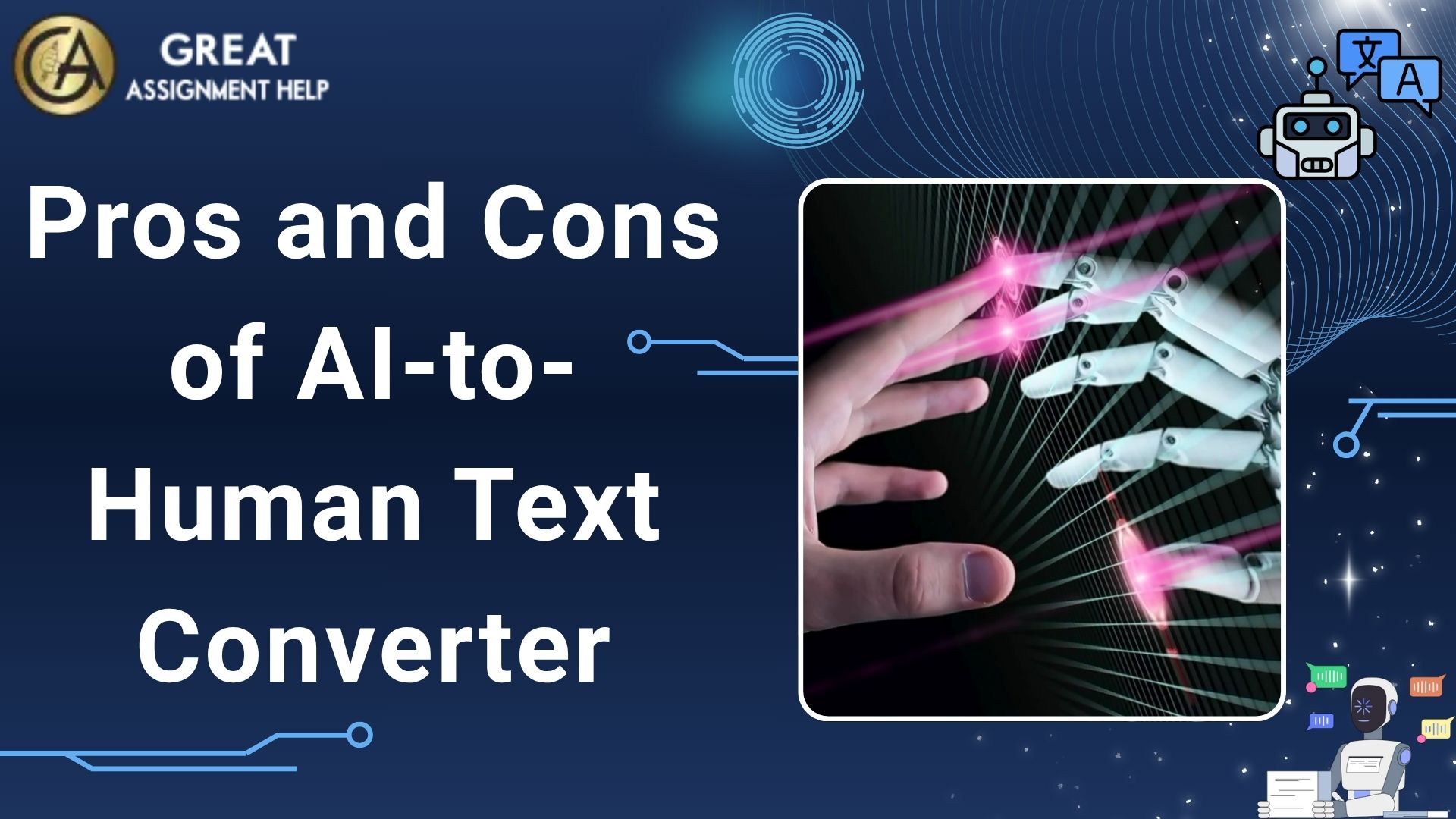AI-to-human text converters help you make AI-generated writing clearer, more natural, and easier to read. These tools can boost your learning and communication skills. However, you need to use them responsibly. Overreliance can create issues with honesty, skill development, and fairness.
Artificial Intelligence (AI) tools can create content very quickly, but their writing will often feel mechanical and lack emotion, which will make it hard for people to read. That is why it is essential to humanize AI text. If you want to humanize your AI-written content, you can use an AI-to-human text converter. It is an AI-based tool that will change robotic, computer-generated writing into natural, easy-to-read language. No matter whether it is for learning, marketing, or everyday writing, these converters will help turn fast AI-generated text into meaningful, human-like writing. If you wish to know about the AI-to-human Text conversion tool, read this blog. Here, we have explained why AI text sounds robotic, how these converters work, who benefits from them, and the ethics of using them in education.
Why Does AI Writing Sound Robotic?
Here are some common reasons why AI text feels flat, stiff, or too formal.
- AI writing tools are impressive, but they don’t truly understand how people think, feel, or speak naturally. So, its text can feel cold or dry.
- AI often repeats the same words or sentence structures. This makes the writing boring.
- The language used by AI tools can sound mechanical and lack personality.
- AI sometimes misinterprets subtle meanings or cultural references.
- AI can’t add humor, personal stories, or unique experiences unless specifically instructed.
Who Can Use the AI Text to Human Converter?
- Students can use the AI text conversion tool to make AI-assisted essays sound authentic.
- Marketers can rely on them to create copy that is more persuasive and appealing.
- Non-native English speakers can use the AI text converter to improve their tone and fluency.
- Educators can use the AI text-to-human converter to make learning materials more engaging for students.
- Freelancers can use the tool to polish AI drafts before sending them to clients
- Bloggers can use them to add warmth, flow, and personality to their writing.
Ethical Implications of Using AI-to-Human Text Converters in Education
AI-to-human text converters in education can be helpful, but they will also bring some of these important ethical concerns.
- Academic honesty becomes an issue when you use AI to create essays or assignments, even after humanizing them, because it isn’t truly your own work.
- Overreliance on these tools can prevent you from developing your own writing and critical thinking skills.
- Unequal access to converters can give some students an unfair advantage.
- If you change AI-generated text too much to make it seem human, your teachers may find it hard to judge how well you actually understand the topic.
How to Ethically Use AI Text Converters in Education
AI text humanizer tools are powerful, but using them ethically is very important in education. When you use them responsibly, they can help your learning without affecting your integrity. If you are unsure about using these tools for tests, you can follow the guidelines shared below or get reliable Online Exam Help from experts.
- Use AI as a learning tool to help improve your drafts, not to replace your own work.
- Be honest and let others know when you have used these tools, and understand what they can and cannot do.
- Combine AI suggestions with your own critical thinking and personal ideas to create original work.
- Follow your teachers’ guidance, as they can design tasks that encourage creativity and make misuse harder.
Understand the Working of AI-to-Human Text Converters
An AI-to-human text converter transforms AI-generated content into natural, warm, and readable writing. Most importantly, the tool adds the emotion and detail that AI text often misses. Here is how they work:
- Improve tone and style by making flat or formal AI text into a more casual, conversational voice.
- Add emotion and personality, including warmth, humor, or sentiment, to make it more interesting.
- Simplify sentences and remove repetitive phrases to increase clarity for better readability.
- Correct grammar and phrasing to make the content polished and natural.
- Adjust language to suit the audience and also make it friendly for blogs or professional for reports.
Steps to Use AI Text Converters Effectively
Generally, an AI-to-human text converter is easy to use. But before using it, you should understand what the tool can achieve and guide it toward the tone and style you want. Here is a step-by-step approach to using the AI text conversion tool
- First, choose a converter according to your preference for grammar, tone, or simplifying text.
- Next, paste your AI content into the converter’s editor or input box.
- Then, depending upon your audience, select a tone if the tool allows it.
- Review the output carefully to make sure it keeps your original meaning.
- Add personal stories, emotions, or smoother transitions to make it more engaging.
- Optionally, check for plagiarism or run it through an AI detector if you want to ensure originality and authenticity.
No matter whether it is for education, blogs, or marketing, by following these steps, you can humanize the AI-generated content. If you struggle to humanize AI text using the converter, get Assignment Help from an expert online.
Pros and Cons of AI-to-Human Text Converters

AI-to-human text converters will serve as useful tools in boosting AI-generated text. But like other technologies, these converters also come with advantages and drawbacks.
Pros
- Improve readability by converting stiff or robotic text into smooth, easily readable material.
- Save time by quickly polishing AI-generated text rather than writing manually.
- Improve tone and flow, including making formal or informal adjustments according to your audience and purpose.
- Enhance your creativity by offering different rephrasing options in varying styles and tones.
- Assist non-native speakers to improve their grammar and sound more fluent.
Cons
- Some AI text conversion tools may change the meaning of your content or make complex ideas too simple.
- Even after using the AI text converter, your text might still have a robotic sound and lack human warmth or personality.
- These tools can make all your writing sound the same if relied on too much.
- The converters cannot understand the contexts, emotions, or deeper ideas like you do.
- There is an improper usage in education that hampers learning essential writing and thinking skills.
Wrapping Up
By now, you must have obtained a better understanding of AI-to-human text converters in education. If you want to prepare assignments effectively and as early as possible, then you can use AI writing tools and save your precious time. But before submission, try to make the content readable by humanizing it using AI text conversion tools. If you are not able to do your academic tasks effectively with AI tools or humanize your assignment, then utilize our AI Assignment Help services. Professionals from our team will provide plagiarism-free and AI-free assignments before the deadline.
FAQs
1. Why should I humanize my AI-generated content?
AI text comes off flat and unclear most of the time. Humanizing it, on the other hand, adds warmth, improves readability, and makes it more organic and relatable in marketing, education, and general communication.
2. Is it ethical to use an AI text-to-human text converter in education?
Everything depends on how you use it. Generally, overreliance on AI text conversion tools develops issues with honesty, skill development, and fair grading.
3. What makes AI writing feel mechanical?
AI often doesn’t sound human because it lacks emotion, carries a similar sentence structure over and over, and even misunderstands context. It also can’t add humor, cultural nuances, or personalized flavor that make writing truly human.



